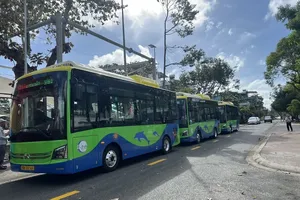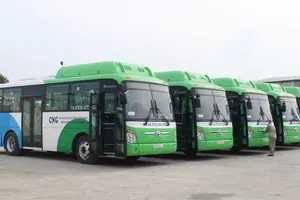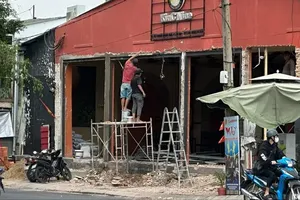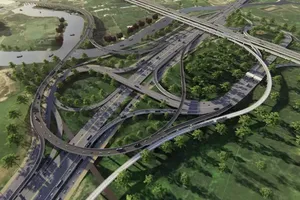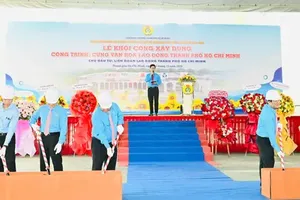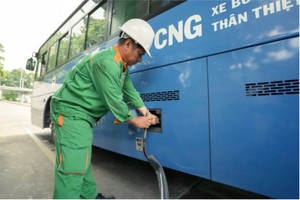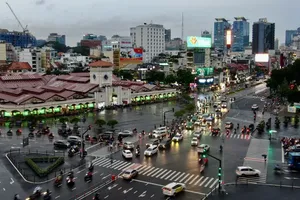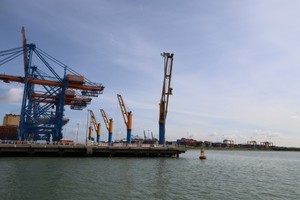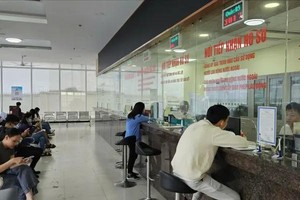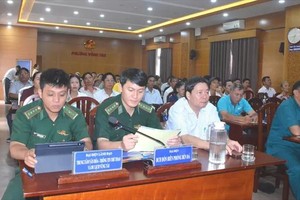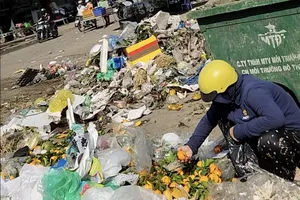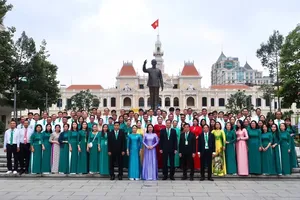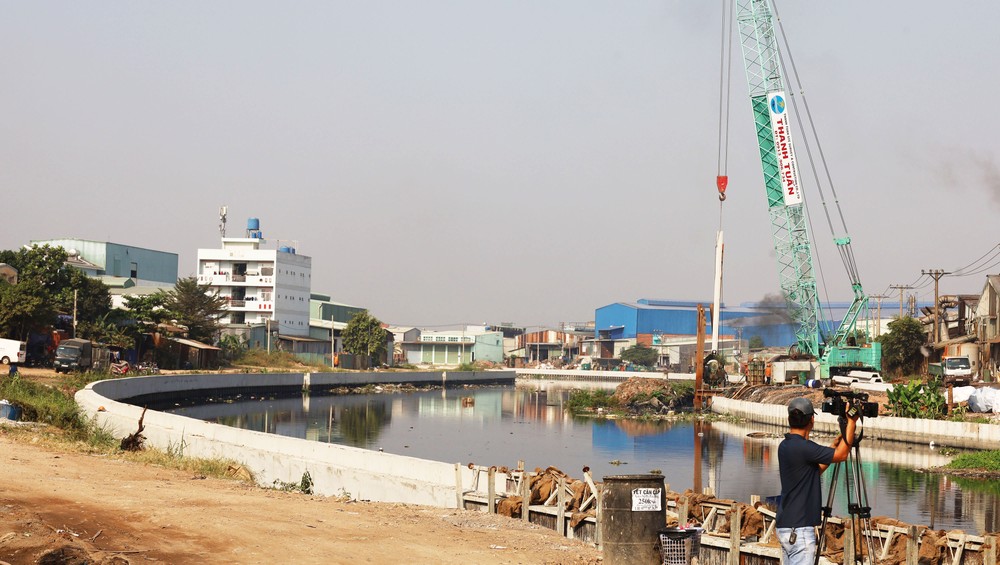
Not only the transportation sector, but also cultural and social works, schools, and hospitals also see the lack of infrastructure, so they are seriously overloaded.
Over the past few decades, traffic jams in the Eastern, Western, Southern, and Northern gateways of Ho Chi Minh City have become increasingly serious. During rush hour, thousands of vehicles line up snarling both sides of the roads.
The National Highway 13 is an important road at the Northeast gateway of Ho Chi Minh City, passing through Binh Duong Province and connecting to Central Highlands provinces.
While Binh Duong Province has expanded this national highway to six lanes and is about to increase it to 8 lanes in the near future, the highway section in Thu Duc City still has only two lanes. Therefore, this section has become a hotspot for serious traffic congestion.
Resident Nguyen Quang said the area often sees frequent traffic jams, high tide or flooding during the rainy season.
The Highway 13 section through Ho Chi Minh City with a length of 4.5km long is a part of the Binh Trieu 2 road and bridge construction investment project. The project was implemented in 2002.
Initially, it was expected to expand to 60m with a total investment of more than VND4,700 billion (US$186,149,070). Then, due to a lack of capital, the scale was reduced to 43m with an investment capital of VND3,200 billion. Because the investment capital exceeded financial capacity, the investor asked for permission to stop the project in 2004 after completing Binh Trieu 2 Bridge.
Although many plans were proposed, the project was still delayed. Then the National Assembly Standing Committee issued the Resolution 437/2017 requesting a temporary suspension of BOT investment on the existing road, so the city must use its state budget for this project. Recently, thanks to the National Assembly-approved Resolution 98 on piloting specific mechanisms and policies for the development of HCMC, the project continued to be implemented.
According to Chairman Tran Du Lich of the Advisory Council for the Implementation of the National Assembly’s Resolution No.98/2023/QH15 said that infrastructure is the city’s biggest bottleneck. Infrastructure is one of the two biggest bottlenecks in Ho Chi Minh City for a long time in addition to the mechanism bottleneck. If the mechanism has been partly removed by the Resolution 98 that Ho Chi Minh City is actively implementing, infrastructure is still a bottleneck that cannot be resolved in a day or two, mainly due to a lack of capital and mechanism for the appeal of social contributions.
The government should spend more on infrastructure development; first of all, on transport infrastructure in Ho Chi Minh City and the southern economic regions. He pointed out sluggish highway construction projects resulting in the construction of the ring roads in the middle for many years. Ring road and expressway networks were soon included in the planning, proving that there was a great need and a vision, but a small budget hampered the implementation.
Regarding investment in the education sector, the 11th Congress of the Ho Chi Minh City Party Committee determines to build 300 classrooms per ten thousand people of school age.
In the 2023-2024 school year, Ho Chi Minh City has 2,737 education and training establishments, of which 1,481 are public and 1,256 are non-public. However, in reality, many schools have higher enrollment than prescribed by the school charter, and the percentage of students studying 2 shifts a day is still low. Worse, districts with large immigrant populations see a serious lack of schools.
Every year, the number of students increases by about 40,000, meaning Ho Chi Minh City needs to build about 1,000 more classrooms. The city People's Committee assesses that the city does not have enough schools that can meet students' needs. From 2016 to 2020, the city had 721 educational projects with a total approved budget of more than VND58,000 billion. However, only 415 projects worth nearly VND26,000 billion have been completed and put into use.
Inadequate and overloaded infrastructure all cause difficulties and inconvenience for people. Amongst them is patient overload in hospitals. These days, the country is currently reeling under a severe heat wave which drove people to hospitals. An increase in the number of elderly people and children makes the overload in hospitals more serious. Patient overload causes suffering for patients and relatives but also puts great pressure on medical staff. However, many hospital construction and renovation projects are implemented very slowly.
Last year, the city's health sector identified three delayed projects namely Block A of Trung Vuong Hospital; Gia Dinh People's Hospital inpatient area, and Ho Chi Minh City Dental Hospital.
After the flame engulfed many dilapidated houses along the canal in Ward 2 of District 8 on April 1, the government reviewed relocation of houses on and along canals in Ho Chi Minh City as in the midst of a large city, rows of shabby houses with poor living conditions still exist.
In 2021, Ho Chi Minh City targeted to compensate and relocate 6,500 houses on and along canals for the 2021-2025 period. But by the end of the second quarter of 2023, the city had only compensated and relocated 657 houses, only reaching about 10 percent of the plan. As per the city’s urban renovation plan, the city recently agreed to relocate 1,019 households in 20 old apartment buildings whereas the city has not yet started building any new apartments. Meanwhile, the construction and development of new urban areas including Thu Thiem is also slow.
The Ho Chi Minh City Department of Construction acknowledged that relocation of houses on and along canals is carried out behind schedule because of the city's small budget which is just enough for compensation while the city has not yet called for social contributions.
Because the city budget is still limited, new construction projects to replace old apartments are mainly mobilized from capital sources from businesses. From 2021 until now, the city has not yet allocated regular capital for districts and Thu Duc City to carry out inspection and repair work; as a result, no apartments have been repaired yet.
